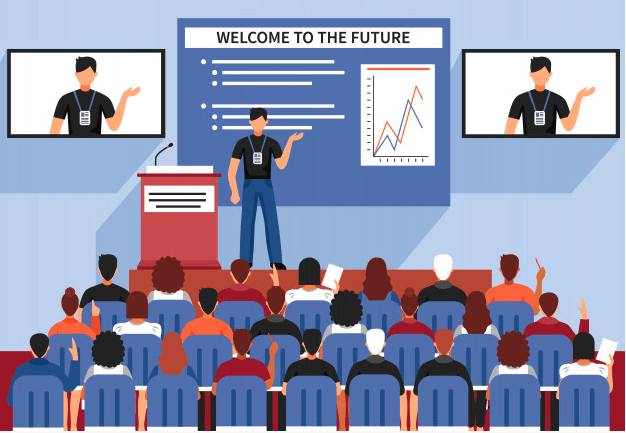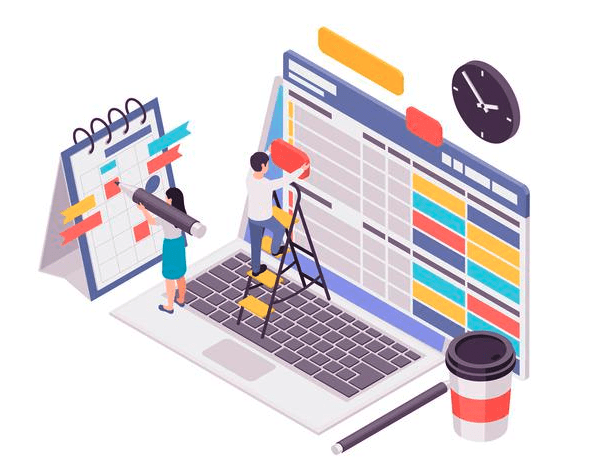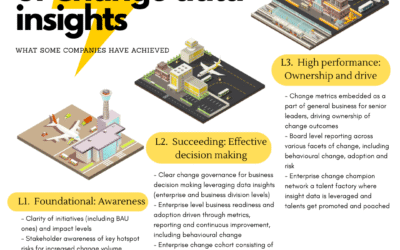Building change capability is ultimately the goal of a lot of organisations to develop a competitive advantage to reach strategic goals. Most businesses aspire to be fast-moving, transformative and agile with continuous improvement capacity building. With the increasing speed of change, organisations need to have the capability to respond accordingly to meet capability gaps. The speed in which organisations are able to flex and adapt accordingly can mean success or failure, given strategic priorities.
What are some innovative ways to build leadership capability?
Innovative ways to build leadership capability include implementing mentorship programs, fostering a culture of feedback, and providing access to online learning resources. Additionally, encouraging cross-functional collaboration and offering real-world project experiences can significantly enhance leadership skills while promoting a more adaptable and competent workforce.
As change practitioners we all aspire to build strong and impactful change capability with the organisation that we work with. We want to see leaders with strong leadership skills and the necessary knowledge to lead their teams through the change process. We also want to see teams with the tenacity and attitude to be open to and work through the change embedment process to achieve key performance indicators.
Doesn’t capability building mean training?
Yes you must have heard your stakeholder say this a million times. The only way to build specific capability is through training? Wrong. Training is one way to convey knowledge and skill development. This is one aspect of continuous learning. But it does not guarantee that the trainee will have the ability or motivation to apply the learning into the workplace. Yet companies spend significant amount of investment sending employees to change capability training. Absolutely, having the knowledge is an important part of acquiring the capability, but again not the only part of sustainable capability building.
So what else can we do to improve change capability?
Many companies according to industry trends use the 70:20:10 rule in capability development. This means:
– 70% of development should be focused on job-based experiential learning and practical application for team members such as challenging assignment in real work context to maximise knowledge retention
– 30% of development should be from work relationships such as mentoring and coaching on best practices
– Only 10% of development should be from training sessions and professional development training programs (including technical skills, hard skills, soft skills and other specific skills) and face to face or online courses to address skill gaps
This does not mean that these three elements of learning cannot be blended together as a part of capability building programs to support sustainable development. In fact, some of the most impactful development programs combine all three elements to address business needs. A lot of change leadership capability programs combine coursework, together with a real-life assignment on implementing a change project. This is also supplemented with group based coaching, as a part of promoting a culture of continuous learning.
What are some of other ways to build change capability?

Role modelling
Role modelling of core capabilities has a powerful and pervasive impact on a large number of people, especially when it’s coming from senior leaders. Consciously or subconsciously, the behaviours of senior leaders in managing change can shape the behaviours of those around the leader. How change is communicated at the individual level, how impacted employees are engaged, and how behaviours are reinforced can be observed and proliferated across the organisation. Demonstrating role modelling is a key part of leadership development.
Change governance
Other than individual change capability skills, organisations must also build their ability to manage the how change is controlled and monitored across the company with large groups of employees. How change governance is designed, and how decisions are made across the organisation are absolutely critical to change capability and meet business goals.
This capability includes:
– How change governance bodies use data to make decisions to monitor and control the planning and implementation of change
– The ability to use various data sources to ‘pulse-check’ on the change readiness of different parts of the business for change
– Quality of decision making process in balancing various business factors of performance, risk, benefit realisation and engagement
– Clarity of the remit of different change governance bodies and the decisions that they are able to make, e.g. at a business unit level versus enterprise level
Operational change cadence
This refers to the capability of a business unit in operationalising change as a part of performance management to meet organisational goals. This includes all facets of business-as-usual changes as well as larger initiatives. Critical elements of operational change cadence includes:
– Different channels of communication and engagement
– Effective structured approach or system of supporting the implementation of learning programs, including online means as well as face-to-face mediums of job training
– Formal tracking of change capability development initiatives across operations, including change champion networks, mentoring and coaching programs, and change leadership programs
– Collection, analysis and insight generation of change impact and the embedment of change, including monitoring change loading and risk of change saturation
– Strategic planning of operational capabilities required and the process of developing the targeted capabilities to support strategic alignment to drive toward business outcomes
How are you going with your progress toward improving your organisation’s change capability? If you would like to find out more about how to use improve change capability through change performance, change measurement and operational cadence contact us.






